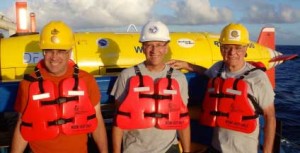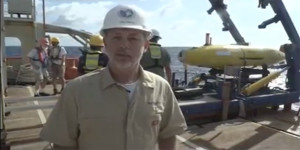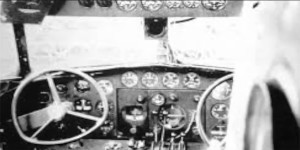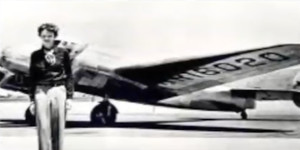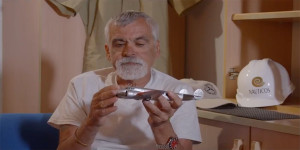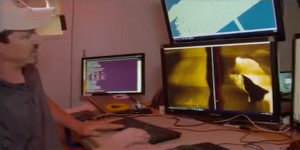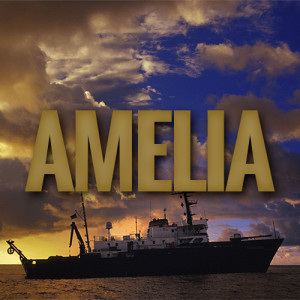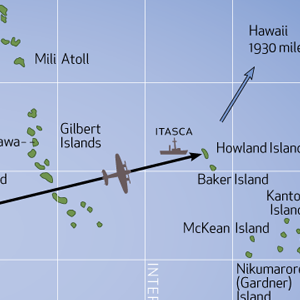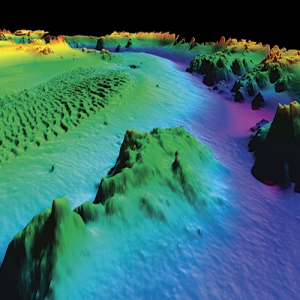Meridian Passages, Volume XIII, Number 20
Central Pacific Edition
Target Practice
How the Sonar Guys Tell a Sweet Spot from a Rock

 The Ops Center was abuzz the other evening with great interest in some new contacts imaged by the REMUS. After days of nothing, we can all be excused for getting pretty excited over a tiny bright spot on the screen! But how do the sonar dudes distinguish an interesting target, worth spending time to investigate, from an interesting pile of rocks? Well, they know that a “good” target has some special characteristics:
The Ops Center was abuzz the other evening with great interest in some new contacts imaged by the REMUS. After days of nothing, we can all be excused for getting pretty excited over a tiny bright spot on the screen! But how do the sonar dudes distinguish an interesting target, worth spending time to investigate, from an interesting pile of rocks? Well, they know that a “good” target has some special characteristics:
Size – The general size of the object is one thing. This can be measured on the sonar by a process called mensuration, which accounts for all of the geometric and speed distortions in the image.
Debris Field – Most catastrophic losses produce a debris field of some size. Sometimes there are secondary effects that disturb the bottom, like downblast waves, current vortexes (changing the bottom as currents move around the object), and the seepage of fluids or corrosion products from wreckage.
Reflectivity – Man-made objects tend to be significantly more reflective than naturally occurring materials. This has to do with several things, including the hardness and consistency of the material. For example a sheet of steel will have better reflectivity than a mound of steel. A long object (like a submarine hull) may echo much stronger if it lies parallel to the path of the sonar than if it were perpendicular to it. Also, an object that has some relief from the bottom may reflect more strongly, like a ridge compared to a flat rock. Other more subtle effects can arise from “resonant cavities”; with certain sonar frequencies, 55-gallon drums look like much bigger targets.
Geometric Patterns – Man-made objects tend to exhibit geometric patterns in the acoustic signature. Straight lines, right angles, parallel lines, etc…
Shadows – Man-made objects tend to have sharp, crisp shadows associated with them. Naturally occurring features tend to erode over time and therefore have fuzzy shadows.
We also consider the surrounding environment. Geology can mask a target, but often we are looking for something that is inconsistent with the trend of local geology, or standing out all by itself.
There is a lot of art and experience in this process. We are trying to pick a (hopefully) strong signal (our target) out of a highly variable noise environment ( random electronic noise, acoustic noise, biological noise, geology, vehicle stability, etc). The operators are constantly trying to tune the system correctly for the conditions so that the target will stand out against the background.
Finally, natural objects can look man-made … we see this in nature all the time. Piles of manganese nodules and volcanic rock can be highly reflective and take on suggestive shapes. We don’t want to waste time diving on a pile of rocks, but we don’t want to miss the real thing!
CELEBRATING INTERNATIONAL WOMEN’S DAY TODAY
In recognition of International Women’s Day, all women on Mermaid Vigilance are granted 24- hrs. shore leave. Enjoy!
Meridian Passages, Volume XIII, Number 19
Central Pacific Edition
CARC Tackles Amelia
Rockwell Collins Engineers Help Solve the Mystery
As I look back on Rockwell Collins’ participation in the Earhart Discovery project I cannot believe it has been 18 years in passing. In October 1998 Collins Radio was then a division of Rockwell International. That’s when I received a phone call from my Defense Communications Vice President, Bob Chuisano, asking me if the Collins Amateur Radio Club (CARC) would like to take a look at the HF (high frequency) communications of Amelia Earhart’s last flight. Bob knew I was president of the Club. The guidance he provided was that all engineering labor would be on a voluntary basis, but that the Club could use the Company’s assets including computers and software.
At that time Nauticos thought that we might need one to three hours to be able to tell if she was headed towards or away from the island. By February 1999 we were on our journey. None of us could have anticipated what was going to occur over the years to follow!
I started by calling up the hams (amateur radio enthusiasts) that I knew in the HF communications area to see if they would like to participate in an Earhart communications analysis. My first call was to our HF Systems guru, Rod Blocksome (KØDAS). And it grew from there. The initial team included:
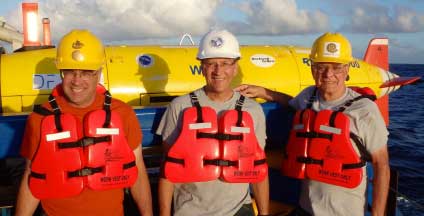
Tom Vinson (NYØV): Program Management, Advanced Data Links.
Rod Blocksome (KØDAS): HF Systems.
Dan Roesler (WDØHOJ): HF Propagation.
Roger Hatcher (WBØOMY): Antenna Design & Modeling.
Charley Snodgrass (KCØCD): Avionics Software, Navigation.
Don Grimm (WAØWJM): Avioncs, Navigation.
After I handed out the ship’s logs and the team convened to study the Earhart communications their first response was “It can’t be done!” I recall that I said “So that’s it? We go back to Nauticos and tell them it can’t be done?” Their answer was “Well, let’s think about it some more.” What was encouraging to me is how the team changed our thinking about the problem. We set aside the idea that it was impossible and instead asked “If it were possible, how would we do it?” That led us to start reviewing what information we knew and what we did not know. And for the information we did not know, how could we obtain it?
That is how we ended up recording simulated Amelia transmissions, finding an AR-60 (CGR-32) receiver in New York and driving there for tests. Driving to Canada for radio tests. Flying out over the Atlantic off Cocoa Beach at 1,000 feet altitude in the Rockwell Collins Cessna 206… twice. Traveling to the Pima Air Museum in Tucson to measure the L10A’s antenna impedance and conduct visibility analysis. And we cannot forget creating field tests on a 1/12th scale model Electra in an Iowa cow pasture and with a Beech 18 Tri-gear in Ankeny, Iowa to measure the antenna pattern on a cold 7 degree day in winter.
That three hour “look” became over 4,000 engineering hours involving over twenty radio amateurs from all across the country, two expeditions, over 180 STEM educational presentations, and 18 years. And we’d do it all over again if given the choice.
— Tom Vinson
Operations Update
It’s Groundhog Day. Another successful launch, REMUS flawlessly collecting sonar imagery, and a safe and uneventful recovery. Whether it happens to be the middle of the day or the middle of the night, it makes no difference. We don’t take for granted the skill and professionalism of all those on the deck, the crane, and the bridge that is tested every time. We can look forward to Groundhog Week just ahead.
The re-supply mission is on! Having experienced problems in past missions that required us to return to port, we made plans this time to have critical items brought to us if needed. We have had some unusual flooding of glass spheres used for transponder flotation. Though we have a working supply and continue to operate, we have chartered a vessel from Honolulu to bring more transponders and glass spheres out to us to ensure we can continue to survey at top efficiency. The sailing vessel Machias, an 82 foot schooner normally engaged in top tier vacation charters, will take a cargo delivery job for us. The ship is preparing for sea now in Honolulu, and will take about 9 days to reach us. We’ll be looking for her on or about March 21st.
Meridian Passages, Volume XIII, Number 18
Special Itasca Edition
Tropical Tribune
 Mermaid Vigilance was not the first vessel to have a daily newspaper. Meridian Passages was published on the R/V Mount Mitchell and an earlier incarnation on the R/V Davidson in previous Amelia search expeditions. But the tradition of a ship’s newspaper goes way back. In fact, the Coast Guard Cutter Itasca, the vessel waiting for Amelia Earhart in July, 1937, published a paper with a hauntingly familiar theme. Reprinted here (with errors intact) is the June 29th, 1937 Evening Edition of the Tropical Tribune, from Howland Island, just days before the famous flyer disappeared. The tongue-in cheek humor is made poignant by the retrospective knowledge that the special guest they are waiting for will never arrive.
Mermaid Vigilance was not the first vessel to have a daily newspaper. Meridian Passages was published on the R/V Mount Mitchell and an earlier incarnation on the R/V Davidson in previous Amelia search expeditions. But the tradition of a ship’s newspaper goes way back. In fact, the Coast Guard Cutter Itasca, the vessel waiting for Amelia Earhart in July, 1937, published a paper with a hauntingly familiar theme. Reprinted here (with errors intact) is the June 29th, 1937 Evening Edition of the Tropical Tribune, from Howland Island, just days before the famous flyer disappeared. The tongue-in cheek humor is made poignant by the retrospective knowledge that the special guest they are waiting for will never arrive.
— editor.
AMELIA EXPECTED TOMORROW
Balta Bitchell’s Column
Miss Lotta Gall, Dean of Bassar, swank eastern college for women is credited for the script of welcoming musical pageant at Howland Island in anticipation of Ladybird Earhart. When questioned by a T.T scribe, she coyly admitted a primal urge to pioneer over dangerous air or water routes but her duties as dean prevented this chance of escape from a humdrum existence – however feeling the throes of composition stirring within her conceived and wrote the playlet recently published by the Pollywog paper. In a sudden burst of confidence she acknowledged that DONALD DUCK was the creator of the musical scores and blushingly admitted “that they were that way about each other.”
Sgt. Thacher, U.S.A. BATTLES MANEATING SHARK. “No Fish Story”
3 pts. off Starboard Bow, ITASCA.
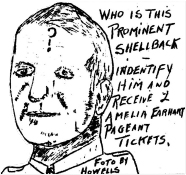 Early this afternoon Sgt. Thacher cast his line over the side using as a bait 2 pounds of raw meat and was very shortly rewarded with a terrific yank on his line. Thacher was pulled half way through [the] life chain before he was seized by quick witted Oscar Yoos and hauled back to safety. Slater Royal Police Chief saved the Sgt’s haul by quickly tying the line around the capstan. The fish was so large and powerful and made such a noise pounding against the ship’s sides that all the watch standers were awakened and hurried to the top sides. Steam was requested via bridge for the capstan to pull the fish in but was immediately belayed when Battling Perry, the “ ____ where angels fear to tread” struck the huge monster of the deep squarely b-tween eyes with a 8 pound bivit*. At this juncture of the proceedings James feinted [sic] and was dragged from the scene of conflict.
Early this afternoon Sgt. Thacher cast his line over the side using as a bait 2 pounds of raw meat and was very shortly rewarded with a terrific yank on his line. Thacher was pulled half way through [the] life chain before he was seized by quick witted Oscar Yoos and hauled back to safety. Slater Royal Police Chief saved the Sgt’s haul by quickly tying the line around the capstan. The fish was so large and powerful and made such a noise pounding against the ship’s sides that all the watch standers were awakened and hurried to the top sides. Steam was requested via bridge for the capstan to pull the fish in but was immediately belayed when Battling Perry, the “ ____ where angels fear to tread” struck the huge monster of the deep squarely b-tween eyes with a 8 pound bivit*. At this juncture of the proceedings James feinted [sic] and was dragged from the scene of conflict.
* We don’t know what the heck a “bivit” is. – M.P. ed.
Invitation to Explore
In this short video, Nauticos expedition leader Dave Jourdan aboard the Mermaid Vigilance in the Central Pacific invites remote participant explorers to join in the Eustace Earhart Discovery Expedition to locate famed pilot Amelia Earhart’s Electra 10E and solve one of the greatest aviation mysteries of the twentieth century solving of “What happened to Amelia Earhart and her navigator Fred Noonan during their last flight from Lae, NewGuinea in route to Howland Island?”




